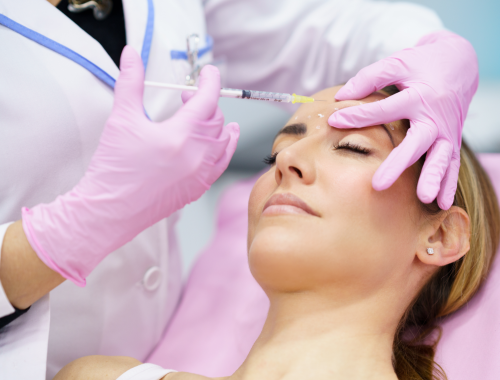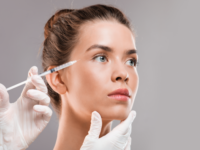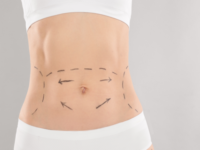
Botox, a popular cosmetic treatment known for its ability to reduce wrinkles and fine lines, has become a topic of concern for individuals who are breastfeeding. While the safety of many medical procedures during breastfeeding is well-established, the use of Botox raises questions and considerations that warrant careful examination.
Understanding Botox:
Botox, derived from the bacterium Clostridium botulinum, works by temporarily paralyzing muscles, thereby reducing the appearance of wrinkles. It is commonly used in cosmetic procedures to achieve a smoother and more youthful look. However, when it comes to breastfeeding, the safety of Botox is a subject of ongoing debate among medical professionals.
Transfer of Toxins:
One of the primary concerns surrounding Botox and breastfeeding is the potential transfer of toxins to the infant through breast milk. Although the exact mechanisms are not fully understood, there is a theoretical risk that the active components of Botox could enter the breast milk and be ingested by the nursing baby. This raises questions about the potential impact on the infant’s developing nervous system.
Limited Research:
Research on the safety of Botox during breastfeeding is limited, making it challenging to draw definitive conclusions. The lack of comprehensive studies examining the transfer of Botox toxins through breast milk and its potential effects on infants means that caution is advisable.
Precautionary Measures:
As a precaution, many healthcare professionals recommend avoiding Botox treatments while breastfeeding. The potential risks associated with the transfer of toxins to the infant, even if they are minimal, are deemed sufficient to warrant caution. It is crucial for both healthcare providers and individuals considering Botox to prioritize the well-being of the nursing baby.
Individual Variability:
It’s important to note that individual responses to Botox and the potential transfer of toxins may vary. Factors such as the dosage of Botox administered, the timing of the treatment in relation to breastfeeding, and individual variations in metabolism could influence the extent to which toxins might be present in breast milk.
Alternative Approaches:
For individuals who are breastfeeding and seeking cosmetic enhancements, alternative treatments that do not carry the same theoretical risks may be considered. Non-invasive procedures, topical treatments, and other cosmetic options that have a lower likelihood of affecting breast milk may be explored as alternatives to Botox during the breastfeeding period.
In conclusion, the safety of Botox during breastfeeding is a topic that requires careful consideration. While research on this specific issue is limited, the potential transfer of toxins through breast milk raises concerns among healthcare professionals. As a precaution, individuals who are breastfeeding are advised to consult with their healthcare providers and explore alternative cosmetic treatments that pose minimal risks to both the mother and the nursing infant.
Why can’t you get Botox while breastfeeding? – FAQ
Q: Can I get Botox injections while breastfeeding?
A: The safety of getting Botox injections while breastfeeding is a matter of ongoing debate among medical professionals. While there isn’t conclusive evidence of harm, there are concerns about the potential transfer of toxins through breast milk to the infant.
Q: What are the potential risks associated with Botox and breastfeeding?
A: The primary concern is the theoretical risk of toxins from Botox entering the breast milk and being ingested by the nursing baby. Although research is limited, healthcare providers often err on the side of caution, recommending against Botox while breastfeeding to prioritize the well-being of both the mother and the infant.
Q: Are there any studies supporting the safety of Botox during breastfeeding?
A: Research on this specific topic is limited, and there’s a lack of comprehensive studies examining the transfer of Botox toxins through breast milk. Due to the limited evidence, caution is advised, and healthcare professionals generally recommend avoiding Botox treatments while breastfeeding.
Q: What alternatives are available for cosmetic procedures while breastfeeding?
A: Non-invasive cosmetic procedures, topical treatments, and other alternatives that pose minimal risks to breastfeeding infants may be considered. It’s crucial to consult with healthcare providers to explore safe options tailored to individual circumstances.
Q: How long should I wait after breastfeeding before getting Botox injections?
A: The timing of Botox injections concerning breastfeeding is not well-defined. It’s advisable to wait until after breastfeeding is complete or to consult with a healthcare professional to determine an appropriate timeline that minimizes potential risks.
Q: Can individual factors influence the safety of Botox while breastfeeding?
A: Yes, individual responses to Botox and the potential transfer of toxins may vary. Factors such as the dosage of Botox administered, timing in relation to breastfeeding, and individual variations in metabolism could influence the extent to which toxins might be present in breast milk.
Q: Are there any safe cosmetic procedures during breastfeeding?
A: Consult with healthcare providers for advice on safe cosmetic procedures during breastfeeding. Non-invasive treatments and those with minimal systemic absorption may be considered as alternatives to Botox.
Always consult with your healthcare provider for personalized advice based on your medical history and individual circumstances.












Leave a Reply